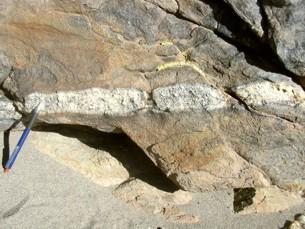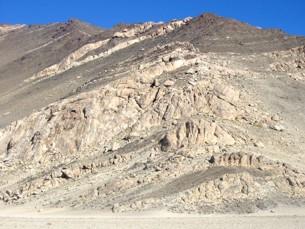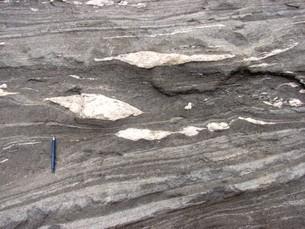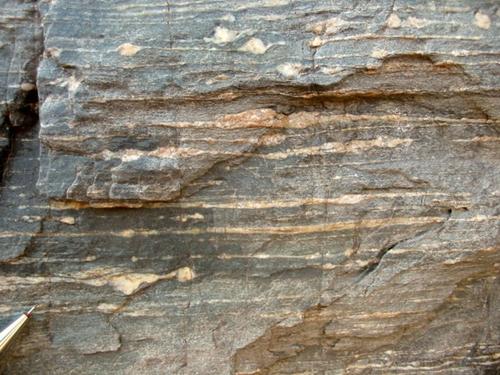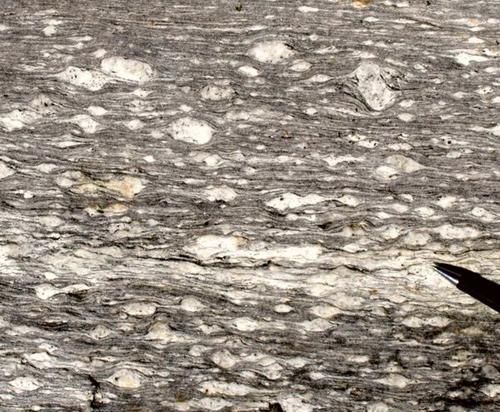High Strain Metamorphism
Boudinaged felsic (i.e., rich in quartz and feldspar) dike crosses metasediments
Image Credit: MBG
Wide ductil shear zone with banded gneiss and mylonitic metagranite in amphibolite facies. Lower Paleozoic, Sierra El Peñón, Argentin
Image Credit: MBG
Subhorizontal shear zones devolped in high-grade amphibolite facies. Sierra de Quilmes, Argentina
Image Credit: MBG
Shear sense indicators
Image Credit: MBG
Augen gneiss from the Alps
Image Credit: Steffen Biersack
High-strain metamorphism deforms rocks with only minor thermal effects and occurs when the strain rate exceeds the ability of the rock to deform plastically. It is sometimes also called cataclastic metamorphism.
Deviatoric stress, strain rate and temperature are the most important variables in this type of metamorphism. Different minerals respond to deviatoric stress in different ways and variously exhibit the effect of the stress. The temperature has a first-order effect on the rheologic properties of materials.
High-strain metamorphism is typically produced along fault and shear zones in the upper and middle crust. It is usually restricted to orogenic zones and is therefore mostly located near plate margins.
The extensive folding and crustal thickening that often accompanies regional metamorphism implies that it is usually associated with compressive tectonic regimes. For this reason, most attempts to link regional metamorphism to plate tectonics setting have concentrated on regions where plates converge.
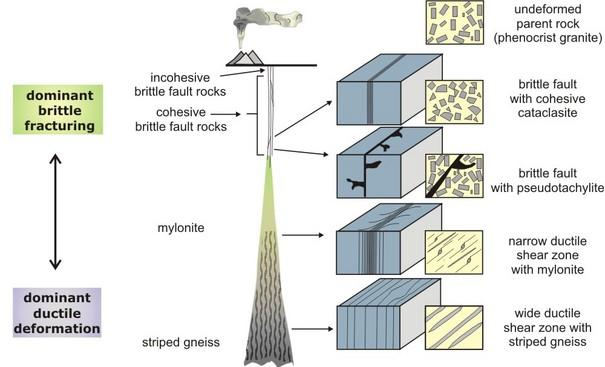
Distribution of the main types of deformed rocks with depth in the crust. a) Schematic cross section through a transcurrent shear zone. The zones may changes, occurring with increasing depth and metamorphic grade, ranging from non-cohesive gouge and breccia near the surface through progressively more cohesive and foliated rock. Note that the width of the shear zone increases with depth as the shear becomes more ductile. b) Schematic representation of four typical fault rocks (cataclasite) and the local geometry of the shear zone in a m-wide block, developed from a phenocrystic granite. The transition between ductile-dominated deformation and brittle fracturing depends on rocks composition, geothermal gradient, bulk strain rate, fluid and metamorphics grade. Mylonite and banded gneiss occur with increasing depth and metamorphic grade. Source: Redrawn from Passchier and Trouw 1996.
